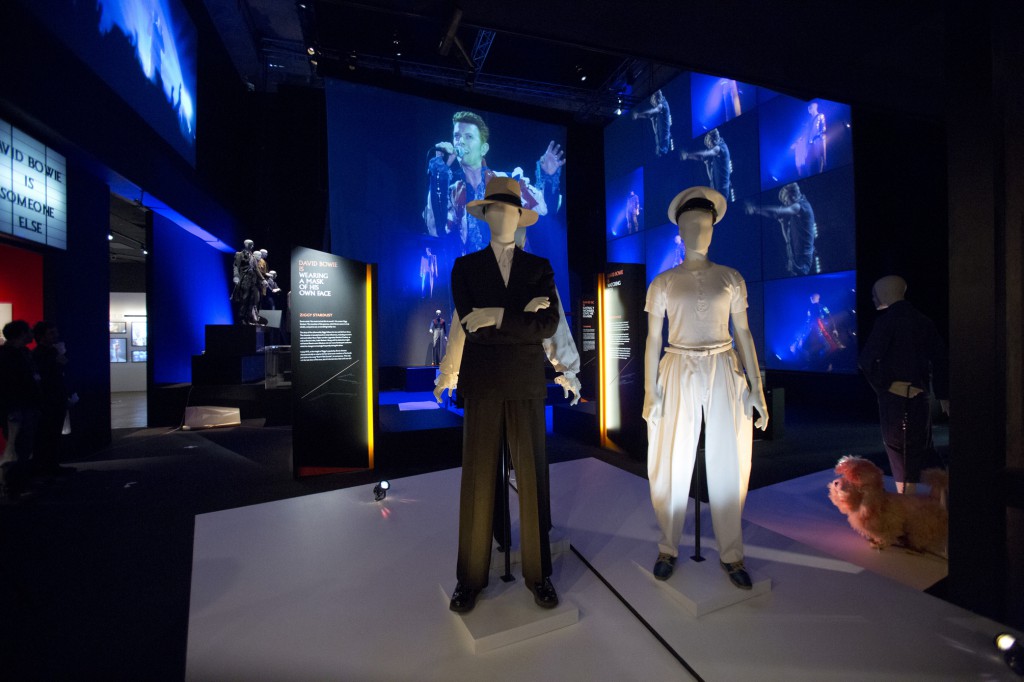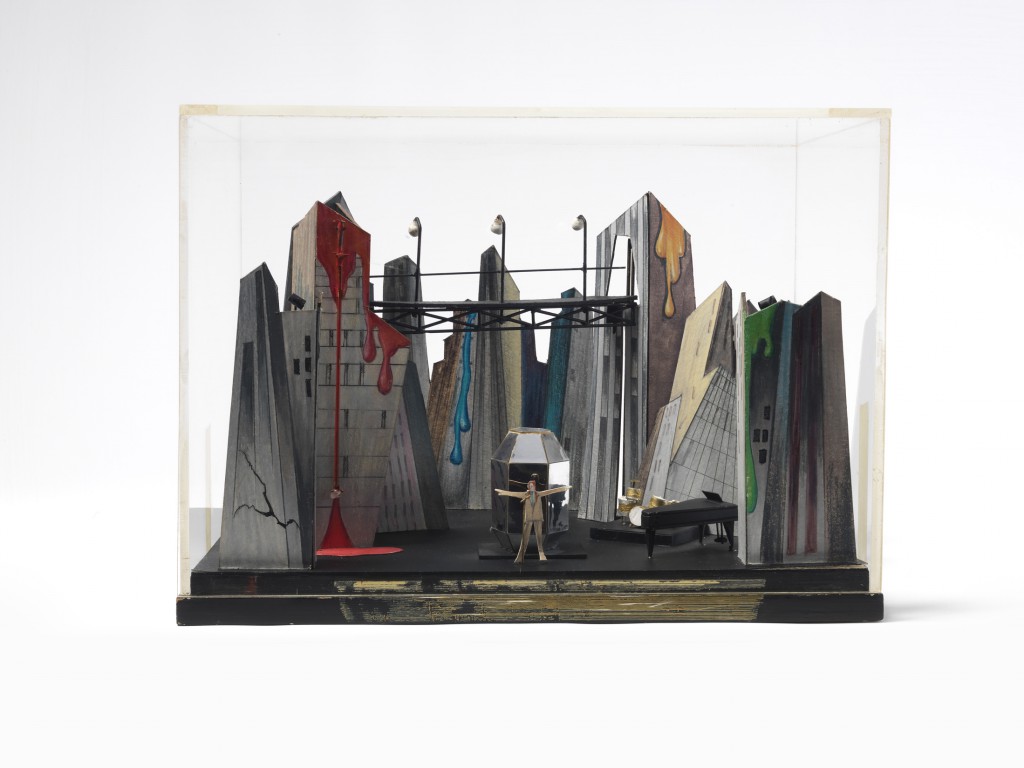Victoria Broackes, curator of Theatre and Performance at the Victoria and Albert Museum in London, talks to us about trailblazing exhibition DAVID BOWIE, which will run at Berlin’s Martin Gropius Bau from the 20th of May.
One of the aims of the “David Bowie” exhibition at the V&A was to draw a different kind of audience than the “regular” museum visitors. So how did you tailor your exhibition in order to make it attractive to people who don’t go to museums all the time?
When Geoff Marsh, co-curator, and I started developing the exhibition over two years ago, we had three main aims; 1. That it would be unlike any museum exhibition we had ever been to 2. That it would bring something of Bowie’s creative, pioneering, and theatrical spirit to the exhibition narrative design 3. That we’d make an exhibition about ‘Sound + Vision’. Bowie’s music and performances are at the centre of our story, and we knew we needed to find a way to integrate film and sound fully with more traditional objects such as photographs and costumes.
With these aims we created an exhibition that appealed not only to museum enthusiasts and Bowie fans, but also to music fans who could not only see objects relating to Bowie but also place them in their performance, musical and emotional context. Along with the exhibition we created a cinematic event ‘David Bowie is Happening Now’, directed by Hamish Hamilton which was broadcast live on August 13, 2013. This film, shown in 200 cinemas across the UK to an audience of 30 000 opened up the exhibition to an audience who may not have considered attending or who couldn’t attend because of their location.

- Installation Shot of “David-Bowie is” at the V&A. Courtesy of the David Bowie Archive.© Victoria and Albert Museum London.
The show is very interdisciplinary and quite high tech as well. Has it influenced the way in which you will curate shows in the future?
Working with 59 Productions, Real studios and Sennheiser on “David Bowie Is” allowed us to explore new areas of exhibition design which created a greater connection between objects and the audience. One of the best examples of this was highlighted in the comment books from the exhibition.The comments showed the public’s appreciation for Sennheiser’s GPS led sound system, especially when they could read Bowie’s handwritten lyrics while listening to the songs. The reaction to this technical involvement has inspired us to continue involving technical elements in our exhibitions, for example, “Shakespeare: Greatest Living Playwright” currently on at the V&A, where we worked with 59 Productions to create an immersive A/V installation featuring interviews with famous Shakespearian actors.
From this point onward we are looking forward to creating even more interdisciplinary and high tech exhibitions at the V&A that allow for greater audience connection with the topics and objects presented.
You gained access to the previously non-accessible David Bowie archive, a unique opportunity. What was the strangest, most surprising or most mesmerizing thing you encountered there?
One of the most wonderful things about the David Bowie Archive is that it contains over 75,000 objects ranging from high fashion Kansai Yamamoto costumes, to sketches, even one on the back of a cigarette packet which is featured in the exhibition. This range is amazing as it shows just how in-depth Bowie’s involvement in the creative process of his music and his performances was, and still is.
One of the most mesmerizing things that we included in the exhibition from the David Bowie Archive was a series of storyboards drawn by David Bowie for a proposed film project connected with Diamond Dogs which he would eventually transform into the Diamond Dogs album and touring show.
These drawings had never previously been on public display and we animated the storyboard in the exhibition to give a sense of how the story might have mapped out. It marks a hugely creative period for Bowie and exemplifies how he works across the board from music to visuals (Sound and Vision!).

